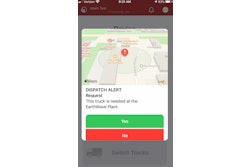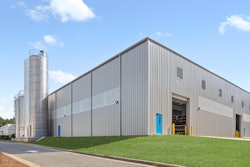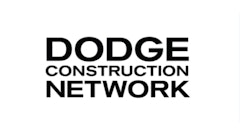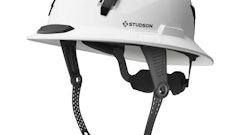
Construction sites are historically loud, dusty, and always on a tight budget and deadline. Because of this, it's clear why every piece of machinery, from earthmovers to cranes, needs to run smoothly to avoid costly delays and keep projects on track. A sound principle, there's one glaring problem putting this to practice: managing these scattered vehicles across different systems feels like a never-ending game of data whack-a-mole. This disjointed management often leads to inefficiencies that can derail even the most meticulously planned projects. With fuel usage, driver behavior, and maintenance schedules spread across multiple platforms, I can attest to the logistical nightmare that comes next.
No more jumping between apps and manual spreadsheets: enter unified telematics and fleet management platforms. Think of them as your fleet's central nervous system, bringing all your data together into one clear view, eliminating the need to jump between disconnected apps and spreadsheets. Instead, with a consolidated solution, fleets get a holistic view of their operations, making real-time decision-making and proactive management a breeze.
From my experience, the benefits are substantial. You’ll see fuel savings by pinpointing where fuel is wasted and making necessary adjustments. Driver safety improves as the system monitors driving behavior. Automated maintenance schedules reduce downtime, keeping your equipment running smoothly. Essentially, these platforms transform a complex logistical mess into a streamlined, efficient process, allowing you to manage your fleet with ease and precision.
Breaking Free from Data Silos
Data silos are like locked filing cabinets scattered across your company, trapping essential information. According to a study by Experian, 40% of business-critical data is trapped in silos. In the construction industry, this fragmentation seriously hampers cost control and efficiency. Managing a fleet isn't just about keeping track of vehicles; it’s about leveraging data to optimize operations. Construction projects involve various stakeholders, each using their own software to manage vehicles, equipment, and workers, which naturally creates isolated pockets of fragmented information. This makes it almost impossible to see the bigger picture and identify inefficiencies.
Without a unified platform, you're stuck in low gear:
- Time wasted: Managing multiple systems takes away time for strategic planning. When fleet managers have to juggle various platforms to get the information they need, valuable hours are lost in the process. This inefficiency prevents them from focusing on more strategic tasks that could drive the business forward, such as optimizing fleet performance, improving safety protocols, and developing cost-saving strategies.
- Bad decisions: Fragmented data means you might miss important trends and make costly mistakes. Without a unified view, it’s easy to overlook critical information that could influence decision-making. Important trends in vehicle performance, fuel consumption, or driver behavior can be missed, leading to decisions based on incomplete or inaccurate data. This can result in increased operational costs, unexpected downtime, and even safety issues.
- Hidden problems: It's hard to track key performance indicators like fuel efficiency and maintenance, leading to more downtime. When data is spread across multiple systems, identifying and addressing issues promptly becomes challenging. Key performance indicators, such as fuel efficiency and maintenance schedules, are essential for keeping the fleet running smoothly. Failure to monitor these indicators effectively can lead to increased downtime, higher maintenance costs, and reduced overall productivity.
By integrating all your data into one comprehensive system, you can streamline operations, make informed decisions, and identify and solve problems before they escalate. This not only enhances operational efficiency but also improves overall project timelines, safety, and cost management.
As a former fleet manager, I know firsthand the frustration of dealing with fragmented data. My teams often felt overwhelmed by data without gaining actionable insights. Communication suffered, and we frequently worked against each other instead of toward common goals. The lack of a unified system meant that information was hard to access, interpret, communicate, and act upon in a timely manner.
Imagine the chaos: spreadsheets overflowing with driver logs, fuel receipts buried in inboxes, and maintenance records scattered across dusty filing cabinets. That was my daily reality as a fleet manager. We were drowning in data but thirsty for insights. Then came the game-changer: a unified telematics/fleet management platform. It was like flipping on a light switch. Suddenly, all our data was centralized, accessible, and, most importantly, actionable. Insights emerged from the shadows, empowering us to streamline operations, improve communication, and work as a cohesive unit.
Actionable Insights at Your Fingertips
Unified platforms go beyond just data collection. They transform raw information into actionable insights through robust analytics tools. Imagine customizable dashboards that give you a quick snapshot of key metrics, allowing you to drill down for deeper analysis. For instance, you can compare fuel efficiency across different vehicle types or track trends in maintenance costs over time. These insights empower you to make data-driven decisions directly impacting your bottom line.
The best part? Unified telematics and fleet management platforms consolidate data into a single, user-friendly interface, offering significant advantages:
- Seamless Integration: Centralized data eliminates the need to switch between platforms for dispatch, driver monitoring, or maintenance scheduling. This integration streamlines operations, reduces errors, and ensures that all relevant information is easily accessible.
- Comprehensive Insights: Powerful analytics tools convert raw data into actionable insights, enhancing decision-making. These tools provide a holistic view of fleet operations, help managers identify trends, predict potential issues, and proactively implement solutions.
- Time Efficiency: A unified platform saves time by making data readily available in one place. This consolidation reduces the administrative burden on fleet managers and allows them to focus on strategic initiatives rather than data collection and analysis tasks.
These platforms also integrate key functionalities, including:
1. Optimize Fleet Performance
- Real-time GPS Location Tracking: Efficient route planning and monitoring for improved operational efficiency and faster response times.
2. Reduce Costs and Downtime
- Proactive Engine Diagnostics: Gain insights into engine health to prevent unexpected breakdowns and costly repairs.
- Fuel Consumption Analysis: Identify fuel-use inefficiencies to save costs and reduce environmental impact.
3. Promote Safety
- Driver Behavior Monitoring: Track behaviors like speeding and harsh braking to promote safe driving practices and reduce accident rates.
4. Ensure Compliance and Streamline Operations
- Comprehensive Maintenance Records Management: Ensure compliance with regulations and streamline maintenance activities for improved operational reliability.
Beyond monitoring, these platforms provide real-time feedback on driver behavior, facilitating targeted coaching programs to improve safety and reduce costs. They also streamline compliance by generating detailed reports on Hours of Service (HOS), Duty Status, and Driver Vehicle Inspection Reports (DVIR). This proactive approach enhances safety and efficiency while ensuring regulatory compliance.
Investing in a Unified Future
Unified telematics/fleet management platforms are not just about bells and whistles; they're an investment in the future of your construction business. By streamlining operations, improving efficiency, and promoting safety, these platforms can give you a competitive edge.
Are you ready to ditch swivel-chair management and elevate your fleet operations? Embrace unified fleet management platforms to unlock actionable insights and drive your fleet's success in the construction industry. By integrating data and providing real-time analytics, these platforms empower fleet managers to make smarter, more informed decisions, ultimately leading to safer, more efficient, and more profitable operations. It's time to untangle the web and unlock the true potential of your construction fleet.




















